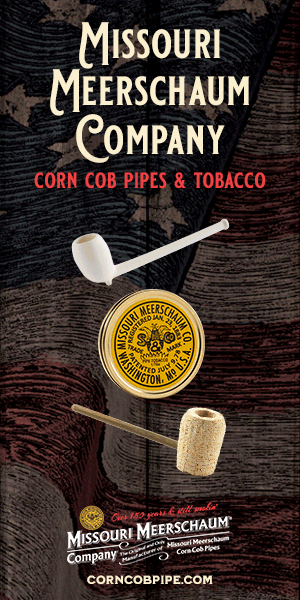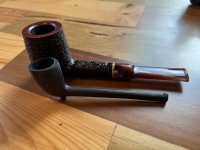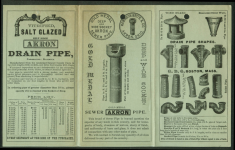19th century pipes
- Thread starter mr_future
- Start date
You are using an out of date browser. It may not display this or other websites correctly.
You should upgrade or use an alternative browser.
You should upgrade or use an alternative browser.
SmokingPipes.com Updates
Watch for Updates Twice a Week
In what turned out to be a smart move, I tried to read “Moby Dick” in fourth grade, got sidetracked by my Grandpa’s paperback copy of “The Man With The Golden Gun” and never picked up Moby Dick again. LOL, don’t even like the movies about or related to the story. Gregory Peck (probably on purpose for a couple reasons) looks like he belongs in “The Ten Commandments”.
What we’re blipping over here is the substantiated existence throughout Europe of wooden pipes a century before briar came into use. Ben Rapaport has just published a book (his tenth) on this neglected corner of pipe history. The edition is very limited; a small number will be at SP, a handful have been sold overseas, and the rest are being sold by the author. If anyone’s interested send me a PM for Ben’s contact information.
I got through it on audiobook. It was a bit tedious but I could drone out on those technical nautical bitsI had a similar experience with Master and Commander by Patrick O'Brian. The movie is one of my all time favorites, so I thought I'd give the book a try this year. Oh man was it a slog. Dull as hell and way too wordy. The dude wrote like he just wanted to flaunt his knowledge of nautical terminology. I got more than halfway through and still couldn't smell a hint of a storyline. When I started to dread picking it up to read, I knew it was time to throw in the towel.
What we’re blipping over here is the substantiated existence throughout Europe of wooden pipes a century before briar came into use. Ben Rapaport has just published a book (his tenth) on this neglected corner of pipe history. The edition is very limited; a small number will be at SP, a handful have been sold overseas, and the rest are being sold by the author. If anyone’s interested send me a PM for Ben’s contact information.
Do you know the title?
Do you know the title?
My understanding is that it’s:
THE WIDE WORLD OF WOOD TOBACCO PIPES
TWO CENTURIES OF CRAFTSMANSHIP AND CREATIVITYI
I’m told only 125 copies were printed and maybe half are gone (that’s an educated guess). I just heard about it 3 days ago and ordered a copy. It’s pricey but I’m a pipe history geek so for me it’s a no-brainer.
I second this. I found O'Brien's books to be very engaging. The nautical bits were in depth, but I took a speed reading course in high school and sped through the longer bits.The movie was a compendium of two books from the series. The author wrote for an audience folks who had interests in the Napoleonic wars, maritime history and such. The audience was/is vast. I've read the entire series, thoroughly enjoying the growth of the two protagonists from start to finish. O'Brian, in my opinion, clearly captured the age. Besides the conflicts at sea, there is the politics and more than a couple of love stories which provide a peek into the age.
This also helped me when reading Moby Dick. A great book, but it did drone on from time to time. It is a great time capsule for whaling and nautical history, though.
What we’re blipping over here is the substantiated existence throughout Europe of wooden pipes a century before briar came into use. Ben Rapaport has just published a book (his tenth) on this neglected corner of pipe history. The edition is very limited; a small number will be at SP, a handful have been sold overseas, and the rest are being sold by the author. If anyone’s interested send me a PM for Ben’s contact information.
Ben was also featured on Pipesmagazine.com podcast, where I got his email address - it’s in the episode description. I just sent him payment and am awaiting a copy. Per Ben, it is the missing link in pipe history. With only hundreds of copies printed. A true rarity.
It's a shame more aren't being printed but the publisher probably figures it's too niche for more to sell, monographs in general have limited coverage. Kind of like how at least of 90% of Taoist literature hasn't been translated to English because there just isn't much of an audience for it, hell I don't think much of it is even available in modern Mandarin or Cantonese.Ben was also featured on Pipesmagazine.com podcast, where I got his email address - it’s in the episode description. I just sent him payment and am awaiting a copy. Per Ben, it is the missing link in pipe history. With only hundreds of copies printed. A true rarity.
This section from chapter 91 suggests that the sailors smoked clay pipes.
"Others having broken the stems of their pipes almost short off at the bowl, were vigorously puffing tobacco-smoke, so that it constantly filled their olfactories."
"Others having broken the stems of their pipes almost short off at the bowl, were vigorously puffing tobacco-smoke, so that it constantly filled their olfactories."
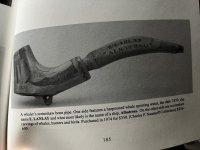
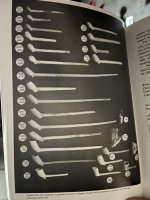 I acquired two of Benjamin Rapaport’s books. A Complete Guide to Collecting Antique Pipes and the new one on wood pipes. The former is in print and the latter requires an email to the author to order. These books have answered my original question, although many of you did, too. The first book even has a picture of a bone pipe with a sperm whale and a ship’s name on it.
I acquired two of Benjamin Rapaport’s books. A Complete Guide to Collecting Antique Pipes and the new one on wood pipes. The former is in print and the latter requires an email to the author to order. These books have answered my original question, although many of you did, too. The first book even has a picture of a bone pipe with a sperm whale and a ship’s name on it.Rapaport did mention that clays were favored by sailors and other poor working class folk. From seeing so many examples I would imagine that all sorts of pipe materials and styles were represented on the Pequod, especially considering the multi-national crew.
Last edited:
Ben’s books are always worth the read for those of us with an avid interest in the history of pipes. I received a copy of the book on wooden pipes as a gift from @jguss with a very nice inscription from Ben. It’s a stunning book.View attachment 363777View attachment 363778I acquired two of Benjamin Rapaport’s books. A Complete Guide to Collecting Antique Pipes and the new one on wood pipes. The former is in print and the latter requires an email to the author to order. These books have answered my original question, although many of you did, too. The first book even has a picture of a bone pipe with a sperm whale and a ship’s name on it.
Rapaport did mention that clays were favored by sailors and other poor working class folk. From seeing so many examples I would imagine that all sorts of pipe materials and styles were represented on the Pequod, especially considering the multi-national crew.
Fascinating, I knew the Inuit made some of their pipes from whale bone but didn't realize white sailors did as wellView attachment 363777View attachment 363778I acquired two of Benjamin Rapaport’s books. A Complete Guide to Collecting Antique Pipes and the new one on wood pipes. The former is in print and the latter requires an email to the author to order. These books have answered my original question, although many of you did, too. The first book even has a picture of a bone pipe with a sperm whale and a ship’s name on it.
Rapaport did mention that clays were favored by sailors and other poor working class folk. From seeing so many examples I would imagine that all sorts of pipe materials and styles were represented on the Pequod, especially considering the multi-national crew.
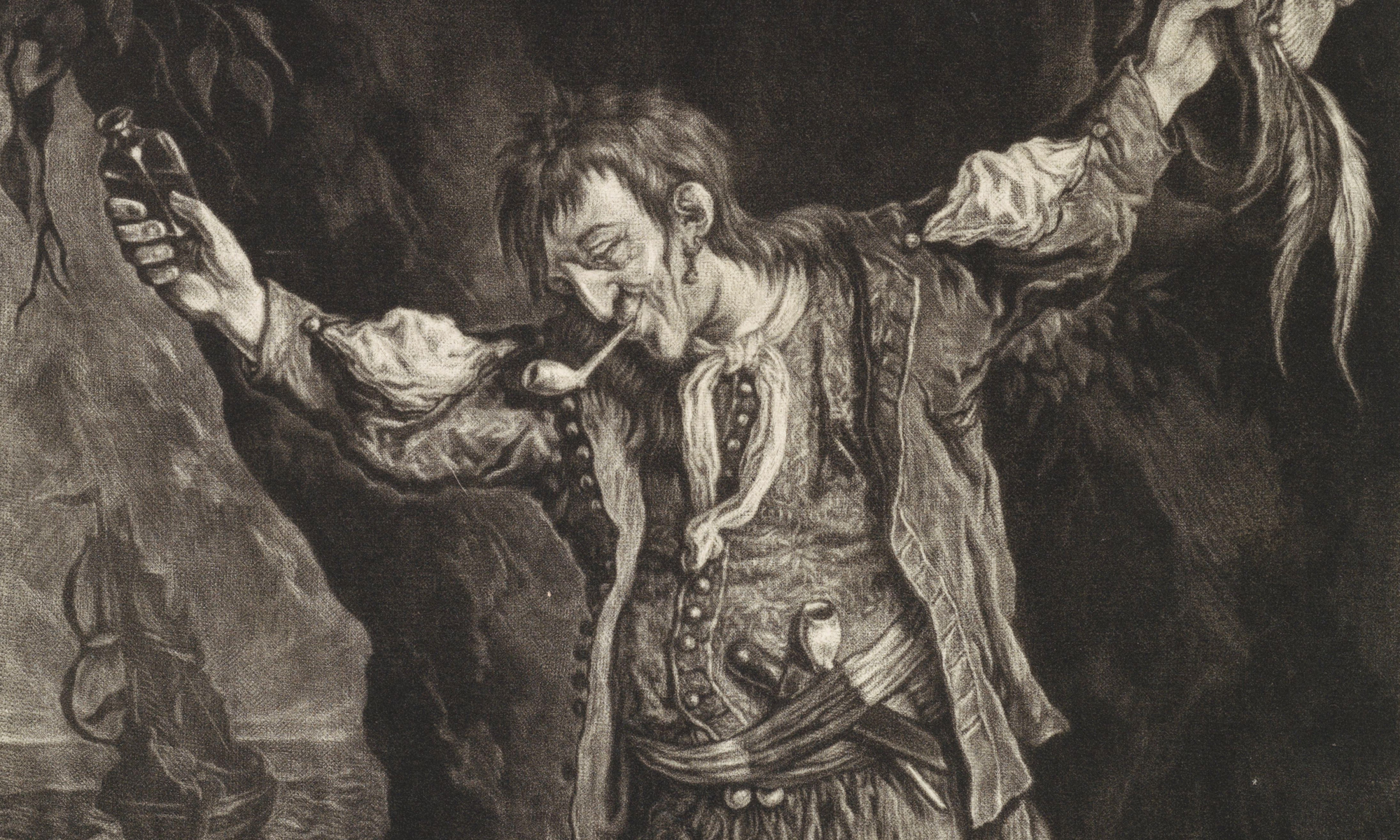
Smoke on the Water: Tobacco, Pirates, and Seafaring in the Early Modern World
In the 1990s, maritime archaeologists started to excavate the remains of a shipwreck in Beaufort Inlet on the North Carolina coast, excavations that continue (you can follow their progress on this …




